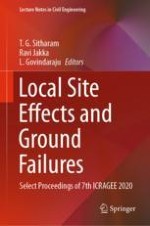2021 | OriginalPaper | Buchkapitel
GIS-Based Landslide Hazard Zonation and Risk Studies Using MCDM
verfasst von : Ankit Tyagi, Reet Kamal Tiwari, Naveen James
Erschienen in: Local Site Effects and Ground Failures
Verlag: Springer Singapore
Aktivieren Sie unsere intelligente Suche, um passende Fachinhalte oder Patente zu finden.
Wählen Sie Textabschnitte aus um mit Künstlicher Intelligenz passenden Patente zu finden. powered by
Markieren Sie Textabschnitte, um KI-gestützt weitere passende Inhalte zu finden. powered by
